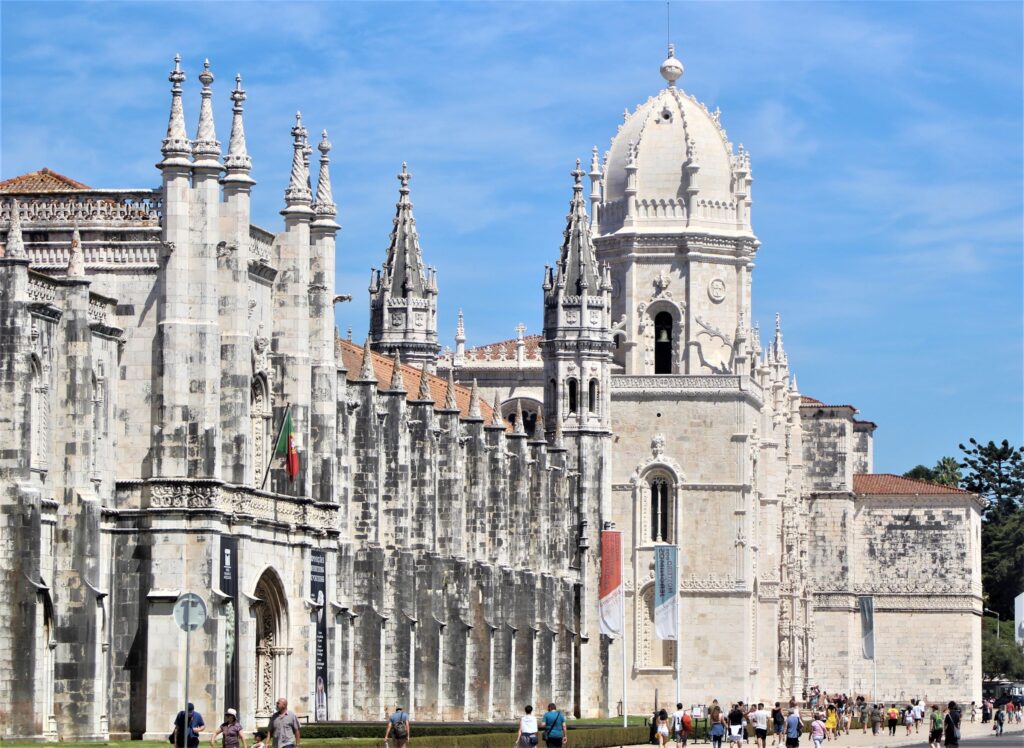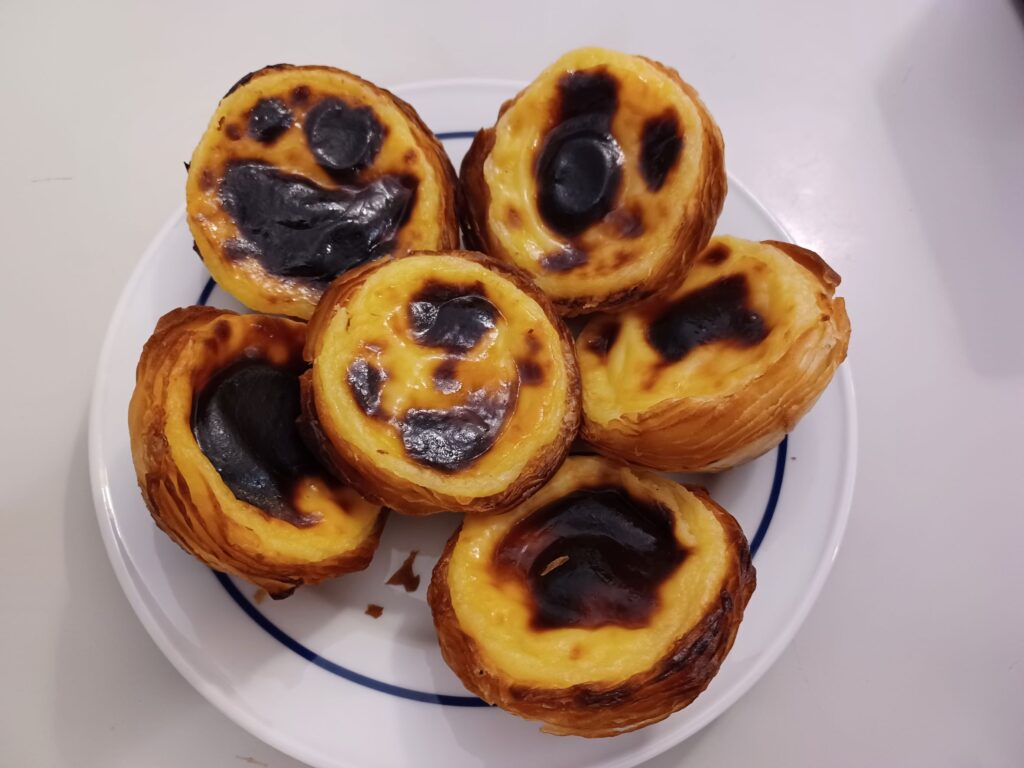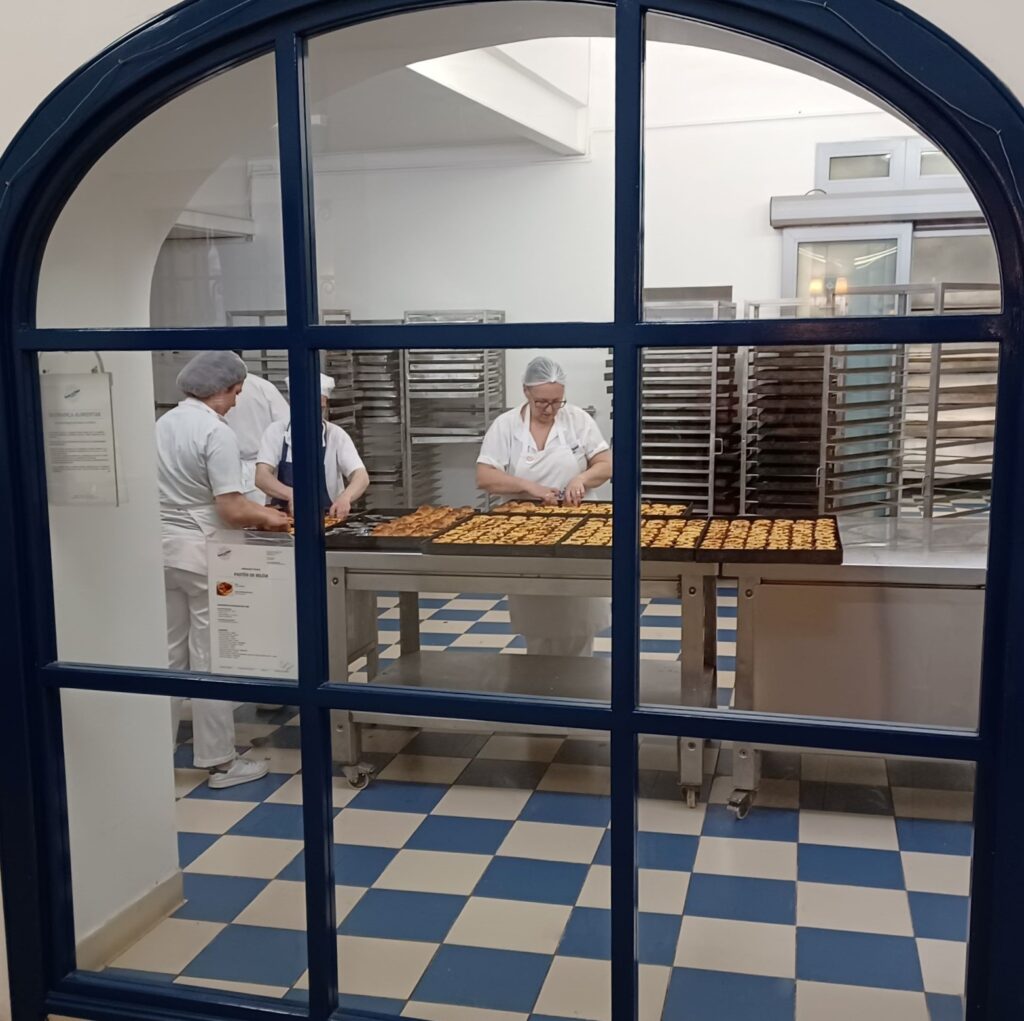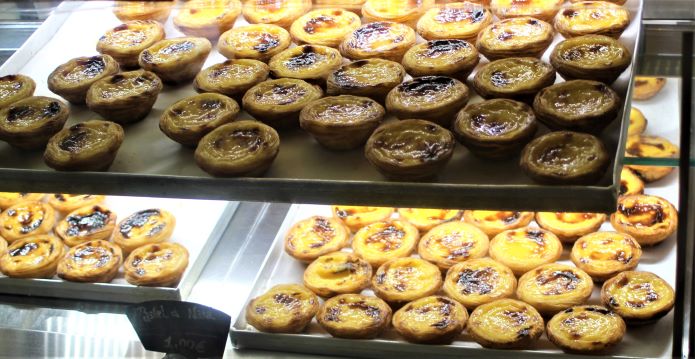Lisbon’s custard tart, the Pastel de Nata is available at every bakery in the city. But only one place can call their pastry Pastéis de Belém.
Pastéis de Belém origin story

Without the monks at the Jerónimos Monastery in the Belem section of Lisbon, there would be no Pastéis de Belém.
Back in the 18th century, monks used egg whites to “starch” their garments. And, what happens when you use a lot of egg whites? You get a lot of left over egg yolks.
And, just like nuns who used excess yolks from wine production in France to make cake, the frugal monks made a pastry. This custard tart which became known as a Pastéis de Belém is made using a closely guarded recipe but contains egg yolks, milk, sugar, vanilla, and other ingredients. The crust is crisp and flaky with lots of layers, sort of like a croissant.
Eventually, the monk’s sold the recipe to a local sugar refinery, who, in turn, opened a bakery in 1837. That bakery, Fábrica de Pastéis de Belém, is still churning out delicious custard tarts to this day.
Visiting Fábrica de Pastéis de Belém

Even if you tried Pastel de Nata at other pastisseries in Lisbon (and you should, Pastelaria Santo Antonio is my personal fave), a trip to Pastéis de Belém is a must.
The bakery is just across the street from the Jerónimos Monastery and within walking distance of other famous sights in Belem like Padrão dos Descobrimentos (Monument of Discoveries) and the Belem Tower.
When you arrive at Fábrica de Pastéis de Belém, you’ll probably be faced with a very long line snaking down the street.
Fear not.
This is the line for takeaway orders from the bakery.
If you want to stand in line in the hot Lisbon sun, go ahead. But, a better strategy is to go inside. The host will lead you through several small rooms to your table. There, you can order your Pastéis de Belém and maybe a coffee.
Remember, only Fábrica de Pastéis de Belém can call their custard tart a Pastéis de Belém. It’s trademarked. Everyone else has to call theirs a Pastel de Nata. Kind of like how champagne comes from a particular region of France. Everything else is sparkling wine.
While you are waiting, take a walk around. There’s large windows to the kitchen in the bakery so you can watch while pastries are being made, dozens at a time.

Once you are served, shake some powdered sugar or cinnamon (or both) on your Pastéis de Belém and enjoy!
What makes a good Pastel de Nata
Whether you get your custard tart at Fábrica de Pastéis de Belém or someone else in Lisbon (or Portugal, for that matter), there are a few things that separate the good ones from the bad.

First, it’s always best to get your Pastel de Nata fresh out of the oven. The custard is sooooo good when it’s warm and a little runny. It’s ok to ask for one right out of the oven or even point to the exact one you want in the display case. Since the fresh and hot ones are best, you don’t want to get your Pastel de Nata at the grocery store or someplace where they’ve been sitting around.
Second, a good crust is key. It should be flakey and crisp. Expect little shards of crust to fall down onto your plate like snowflakes when you take a bite. If the crust is soggy or chewy, you’ve got a subpar Pastel de Nata.
About the Author

Brent Petersen is the Editor-in-Chief of Destination Eat Drink. He currently resides in Setubal, Portugal. Brent has written the novel “Truffle Hunt” (Eckhartz Press) and the short story collection “That Bird.” He’s also written dozens of foodie travel guides to cities around the world on Destination Eat Drink, including in-depth eating and drinking guides to Lisbon, Porto, Sintra, Monsaraz, and Evora in Portugal. Brent’s podcast, also called Destination Eat Drink, is available on all major podcasting platforms and is distributed by the Radio Misfits Podcast Network.
